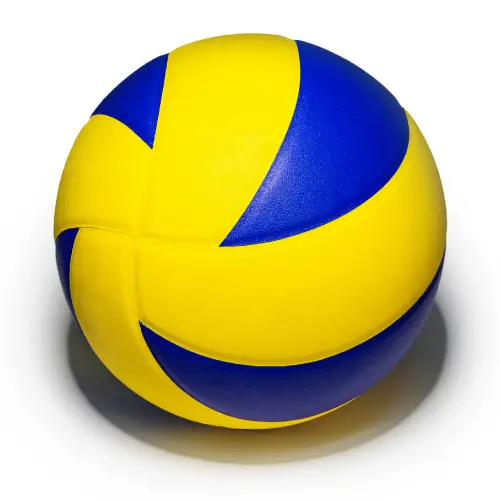Beach volleyball is a thrilling and exciting sport that has gained popularity around the world in recent years. It is played on a sand court and involves two teams of two players each, who compete to hit a ball over a net and onto the opponent’s side of the court. The rules of beach volleyball are similar to those of indoor volleyball, but the sand surface and outdoor setting offer unique challenges and opportunities for players.
Whether you are a seasoned athlete or just looking for a fun way to enjoy the sun and sand, beach volleyball is a great way to get active and have fun. In this article, we will explore the history and origins of beach volleyball, as well as the basic rules, skills, and strategies of the game. Whether you are a beginner or an experienced player, this article will provide you with everything you need to know about beach volleyball.
The History Of Beach Volleyball
The Outrigger Beach and Canoe Club put up a court on Waikiki Beach in 1915, which is likely when beach volleyball was first played in Hawaii. However, the majority of individuals think that it started in Santa Monica, California, in the 1920s, about 25 years after the indoor version of the game was created in Massachusetts on the other side of the country.
The activity started as a beachside family activity, but because of its widespread appeal and low cost, it quickly expanded throughout the world. By the 1930s, it was being performed in the most bizarre locations, including the capital cities of Latvia, Bulgaria, and former Czechoslovakia, Riga, Sofia, and Prague.
During the Great Depression, the sport saw a growth spurt. Hundreds of strapped-for-cash Americans came to the beaches to participate in what was essentially a cost-free activity and a free source of amusement. Competitions started taking place in California in the 1950s. The show featured entertainment in the form of beauty pageants and other events. As the popularity of the sport grew, sponsors quickly stepped forward to capitalize on it, and by the 1970s, a full-fledged pro beach volleyball circuit had been established. The sport was approved by the International Volleyball Federation in 1986. The world tour for beach volleyball has now expanded from the United States to Asia and Europe.
There were six open events for ladies and twelve open events for men in 1999, with a total prize pool of $3.66 million USD. In 1999, the tour drew more than 460,000 viewers.
The International Olympic Committee declared shortly after the 1992 Olympics in Barcelona that beach volleyball would be a demonstration sport at the 1996 Olympics in Atlanta.
What Are The Rules And Regulations Of Beach Volleyball?
- A beach volleyball match is played with two teams of two players each, with each team occupying opposite sides of the court.
- The ball is served from behind the back line, and the receiving team must pass the ball to their teammate, who must then hit the ball over the net to the opposing team.
- Players are not allowed to touch the ball more than three times before returning it over the net.
- If a team fails to return the ball over the net or hits the ball out of bounds, the opposing team scores a point.
- The first team to reach 21 points, with a two-point lead, wins the game.
- Players are not allowed to step on or over the boundary lines while playing the ball.
- Players are not allowed to block the ball with their foot or hand, or to hit the ball with their feet.
- Players are not allowed to touch the net or the poles during play.
- Players are not allowed to grab or hold onto the ball during play.
- Players are not allowed to hit the ball more than once in a row without it being touched by an opposing player.
What Are The Differences Between Indoor And Beach Volleyball?
There are several differences between indoor and beach volleyball:
- Playing surface: Indoor volleyball is played on a hard court, while beach volleyball is played on sand. This affects the ball’s bounce and the players’ footing.
- A number of players: Indoor volleyball has six players per team, while beach volleyball has only two players per team.
- Court size: Indoor volleyball courts are larger, with dimensions of 18 meters by 9 meters, while beach volleyball courts are smaller, with dimensions of 16 meters by 8 meters.
- Net height: The net height for indoor volleyball is 2.43 meters for men and 2.24 meters for women, while the net height for beach volleyball is 2.43 meters for both men and women.
- Scoring system: Indoor volleyball uses a rally scoring system, while beach volleyball uses a side-out scoring system.
- Ball size: Indoor volleyball balls are larger and heavier, while beach volleyball balls are smaller and lighter.
- Uniforms: Indoor volleyball players typically wear team uniforms, while beach volleyball players usually wear swimsuits or tank tops and shorts.
Why Do Beach Volleyball Players Hug?
- To Stay Energetic
A sport with a lot of pace and energy is volleyball. The squad must continue to move after each point; they cannot simply stand still.
The players must maintain their momentum in order to maintain the tempo. The team almost immediately embraces after each point is scored.
Each player then resumes their position on the court. The players maintain their vitality by doing this.
- To Keep The Spirits Up
Hugging is more of a custom than a rule during volleyball matches. Some athletes might be doing it to make themselves happier. However, how does that operate?
Numerous advantages of hugs have been documented. Our bodies emit a number of hormones when we are joyful or thrilled.
Among these hormones are serotonin, oxytocin, and dopamine. These hormone levels increase when you hug someone.
- To Scare The Other Team
After a triumph, teammates frequently embrace, and this hug will be brimming with enthusiasm. What happens, though, if the team loses or the point is scored against them?
In this situation, the hug could be a kind of intimidation to frighten the opposing team. The strategy used here is straightforward: If the winning side witnesses the losing one cuddling after they have scored against them, they become uneasy.
Hugging teammates is typically done to celebrate a victory, but what does a losing team do to celebrate? The energy of the hug has the potential to frighten and demoralize the opposition squad.
- To Improve Communication
Humans are typically used to communicating their emotions through words or facial expressions. Touch, however, also plays a significant role in communication.
A study found that by simply touching various body regions of a stranger, one may convey a wide range of feelings to that person.
They were able to convey a variety of feelings, including joy, sorrow, fear, and rage.
Team members can demonstrate their empathy and unite their strengths by hugging each other during the brief period following each point.
- To Calm Each other
During a volleyball match, anxiety and stress can reach extreme levels. However, researchers have discovered that those with poor self-esteem can experience less anxiety when touched.
According to scientists, giving someone physical comfort (like hugs) might lessen stress. In addition, soothing can even help the recipient feel less stressed.
Conclusion
In conclusion, beach volleyball is a sport that is played by two teams of two players on a sand court. It is a popular summer activity that combines elements of physical fitness, teamwork, and strategy.
The objective of the game is to hit the ball over the net and onto the opponent’s side, without letting it touch the ground on your own side. Beach volleyball has a rich history and has evolved over time to become a highly competitive and exciting sport that is enjoyed by people of all ages around the world.






